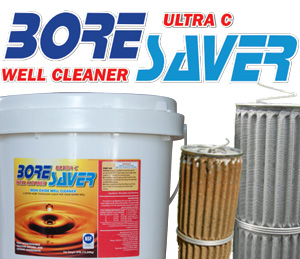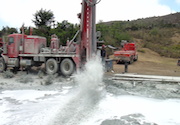| |
| |
 |
| |
 |
|
Oct. 4, 2018 |
|
| |
A study led by researchers at Université de Montréal quantifies for the first time the maximum amount of nutrients – specifically, phosphorus – that can accumulate in a watershed before additional pollution is discharged into downriver ecosystems.
» Read more
Tanja McQueen has been elected chair of the Water Technology Acceleration Project (WaterTAP) board of directors. McQueen, MBA, ICD.D, succeeds Rick VanSant, ICD.D, who remains an active director and becomes vice-chair.
» Read more
New Jersey Institute of Technology researchers have detailed the discovery of the first bacterium known capable of simultaneously degrading the pair of chemical contaminants – 1,4-Dioxane and 1,1-DCE. Phys.org reports.
» Read more
|
| |
 |
 |
| |
|
| |

Throughout Canada, well perforations and pump internals are routinely being plugged by a rusty colored slime. This slime ultimately leads to a decrease in water well efficiency and an increase in energy costs and pump maintenance. The culprit is iron related bacteria.
BoreSaver Ultra C completely removes the iron oxide deposits that build up in bores, wells, pipes and pumps. BoreSaver Ultra C is specifically designed to improve the quality of the water supply, increase the output of the water well, and extends the working life of the pumping equipment.
>> Visit www.lavalunderground.com for more information. |
| |
|
| |
 Giving back to the community through charitable donations is a key focus for many businesses that want to show customers they care about more than the almighty dollar. Ground Water Canada writer Julie Fitz-Gerald talks with one such group, Wells of Hope, who are making giving back a priority.
» Learn more
Giving back to the community through charitable donations is a key focus for many businesses that want to show customers they care about more than the almighty dollar. Ground Water Canada writer Julie Fitz-Gerald talks with one such group, Wells of Hope, who are making giving back a priority.
» Learn more |
| |
 |
 |
| |
|
| |
|
|
| |
| |







